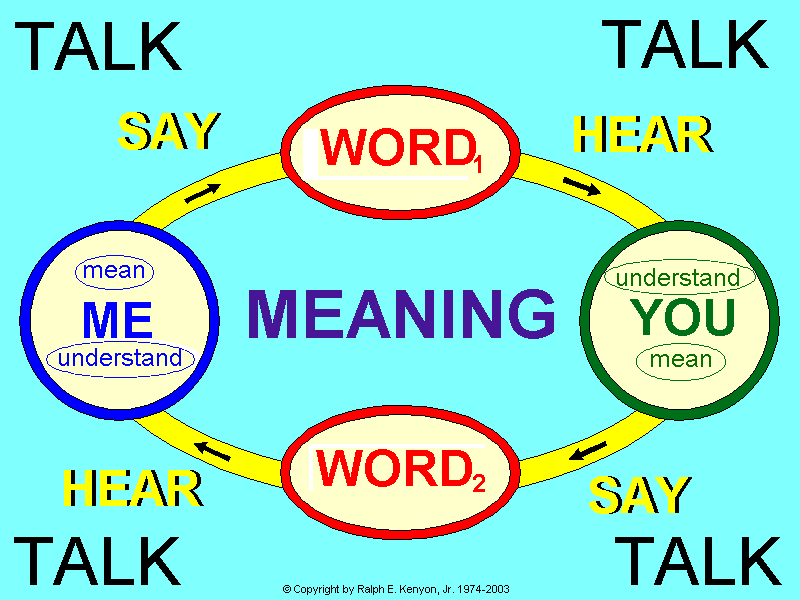| |
|---|---|
A Note on Communication
Three coordinates for "meaning" along the extensional-intensional dimension (an abstraction, not an identity): dictionary, context, idiolect.
Original: December 26, 2005
Revised: September 18, 2008
I have often stated that any two objects (in this case ideas or formulations) can be looked at from a sufficiently high level of abstraction so as to accentuate the similarities at the expense of the differences or from a sufficiently low level of abstraction so as to accentuate the differences at the expense of the similarities. The perceptions of difference or similarity is a function of the level of observation.
In the Introduction to the Second Edition of Science and Sanity, Korzybski wrote:
It is sad indeed to deal with even young scientists...who, after taking off their aprons in the laboratory, relapse immediately into the two-valued, prevalent Aristotelian orientations, thus ceasing to be scientific 1941.
It is often said in general semantics circles that "meaning" is in people, not in words. Don Kerr effectively applied this notion. Unfortunately, many general semanticists seem to take this too far in the intensional direction, losing sight of extensional orientation. To apply this in a reasonably balanced matter means that we must not forget the multi-ordinal nature of "meaning"; we must remain cognizant of the multiple levels of meaning associated with words.
- multi-meaning
- different dictionary definitions
- the same dictionary definition in different contexts
- the same dictionary definition in the same context in different persons
The foregoing means that we start with the (extensional - written in the time-binding record) dictionary definition of non-technical terms and the technical definition of technical terms, and we use those terms consistently with those definitions; we customize the parameters or major structural elements of the terms to the present context, and then we add nuances of individual interpretation. Use of the terms without consideration for the first two levels, that is, as if "meaning" is only in persons, fails to apply extensionality in the communication. The first step in extensional orientation with regard to the use of a term takes one to the "common denominator" of standard usage of the term - the dictionary definition or the technical definition. Expanding a term with its current technical or standard definition will give us the names of subordinate parts and relations among them. How detailed we make this expansion will depend on how many levels of abstraction in the extensional direction we choose to go. When two people perform such expansions and then compare each other's formulations, we have an extensional method of discovering differences in understanding. The differences in the expanded formulations represent differences in understanding.
In practice, I see this as rarely being done in common ordinary communication; I see many taking for granted that the other's expansion matches their own, and this, it seems to me, leads to misunderstanding. The divergence becomes much more rapidly pronounced when one or both fail to use the "common denominators" found in the standard definitions. I make an effort to present part of my expansion, and I generally check out the technical references prior to doing so. I am thereby "practicing" what I am advocating. In a sense I'm telling others what their formulations are likely to be understood as by those who are familiar with the technical terms being employed. Of course I advocate using terms as consistently as possible with their "common denominator" meanings generally accepted, and I refer to these meaning as part of our symbolic environment.
